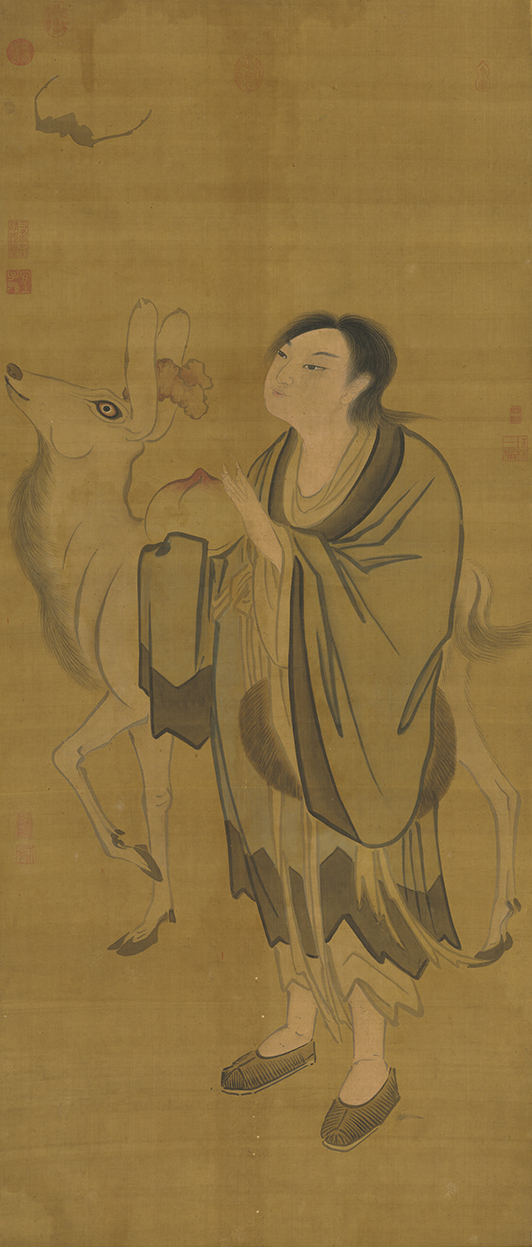Bats and bat products are in use for medical purpose in many countries across the Indian ocean. Stories about this animal were gathered and written by students. They are all part of a pedagogical project, funded by the National University of Singapore and the Université de Paris. The Bestiary site is a work-in-progress and a participatory educational tool, representing animals whose products or body parts are used to promote health and healing.
Five Bats
A story by Emily Andrea Hardie Shi An
There are more than a thousand species of bats in the world, with the smallest (Kitti’s hog-nosed bat) weighing just 2 grams, and the biggest (flying fox) weighing over 1 kilogram. In Chinese culture, the bat is seen as a symbol of good fortune. This is mainly because ‘bat’ in Chinese (bian fu) sounds like ‘luck’ in Chinese (fu). Bats are depicted in many aspects of Chinese material culture such as being carved into jewellery like jade pendants, painted on ceramic bowls, and sewn onto fabrics.
Bats are often depicted in groups of 5, symbolising the 5 blessings (wu fu): health, long life, prosperity, love of virtue, and a peaceful, natural death. In Chinese culture, wordplay and rebuses – code or reference where pictures, letters, or symbols that represent certain words or phrases – are quite common. For example, during the Lunar new year; hanging the Fu symbol upside down to mean prosperity has arrived or ‘Fu Dao’, since ‘dao’ also means ‘flipped’ in Chinese. Likewise, the five bats are used in many rebuses.
Sometimes, five bats are painted as if surrounding the character for longevity, ‘shou’, as if supporting it, to mean Wu Fu Peng Shou (direct translation: 5 blessings surround longevity). During the Lunar New Year, the phrase Wu Fu Lin Men is commonly used as well-wishes towards others (direct translation: 5 blessings reach door meaning may the 5 blessings descend upon this home). When used in rebuses, the bats are often depicted in red, which is considered an auspicious colour by the Chinese. There is also a deity named ZhongKui, who vanquishes ghosts and evil beings, often depicted in painting with 5 bats above him or as having a bat on his fan.
Bat (Singapore, 2016) © Leo Jalais
With the COVID-19 pandemic, bats have come to the front of the news. Some portray them as the enemy we have to defeat, even though there are other animals who are capable of carrying coronaviruses as well. However, bats are an important part of the ecosystem in dispersing the seeds of many plants and eating large quantities of insects. Destruction of their habitats and hunting of bats have resulted in more than 200 species of bats considered vulnerable, endangered or critically endangered by IUCN. In recent medical news, bat venom could be a new lead in blood pressure regulation drugs. Since vampire bats feed on blood, they have special protein in their saliva which prevents blood clotting and encourages the dilation of veins, to ensure a continuous flow of blood from their prey. These proteins are a mutated form of the Calcitonin Gene Related Peptide (CGRP) that human bodies use to dilate our blood vessels. The bat peptides could be used in treatments for many conditions where improved blood flow to damaged areas is needed such as in heart failure, hypertension and burns. Researchers are also hopeful in using these peptides in drug design.
Value in Asian medicine
The bat is a well-known zoonoses carrier. Not only has it been attributed to spreading SARS and COVID-19, it is also well known for carrying many other kinds of viruses and bacteria. For example, severe acute respiratory syndrome (SARS), Middle East respiratory syndrome (MERS), Ebola and Marburg viruses, and Nipah virus (NiV).
Bats are thus often associated with the spread of disease. One of the main reasons why many zoonoses that spill over to humans come from bats is because bats are wild animals that live in close proximity to humans. When their habitat gets destroyed in the name of building more infrastructure or agricultural lands, bats flock to dark corners among human populations like abandoned buildings. For example, in Malaysia, the installation of commercial pig farms in forests where bats were living led to the first human-outbreak of Nipah virus, which had spread from pigs to humans. As we continue to encroach on bat habitats, more contact with these animals will happen which could lead to the spread of more diseases.
On the other hand, culling bats does not seem to do us any favours either. U.S. Center for Disease Control and Prevention and Ugandan health authorities conducted an investigation. They found that after a mining operation that tried to cull bats in a Ugandan cave, the surviving bats displayed increased levels of infection by the Marburg virus. This resulted in Uganda’s most severe outbreak of Marburg hemorrhagic fever in 2012.
Many scientists wonder what it is about the bat that makes it so capable of carrying viruses that can mutate fast, and yet appear immune to the viral effects. This has led to much research in medicine being conducted on bats. Firstly, being the only flying mammal has its perks. The bat has a much higher metabolic rate than other terrestrial mammals. Their body temperatures can reach about 40 degrees Celsius, a temperature at which many viruses cannot survive. Furthermore, these high temperatures allow the bats to avoid certain immune responses that may damage their bodies. In mammals, viral infections could cause an uncontrollable inflammation response that could be deadly in many cases, such as COVID-19. Because of their higher body temperatures, they can tolerate a few more effects of such a response.
Another reason could involve the stimulator of interferon genes (STING) pathway. All mammals have this biological pathway in their bodies that help to jumpstart an inflammatory response during a virus attack. In bats, a genetic mutation has caused a decreased amount of proteins being made from these genes. This also helps lessen the bad side effects that such a response could cause.
Precisely because bats are ‘immune’ to the ill effects of the viruses they carry, they are very helpful in medical research to find out what makes them different. By studying the interactions between their immune systems and viral particles, we could hopefully find a cure for such zoonoses in humans. Evolution has already found a potential answer to surviving many kinds of viruses, as we see in bats. Studying these creatures could perhaps allow us to take a page from their biological systems to try to come up with possible drugs or treatment for humans. We could start to do so by decoding the entire genome of bat species, which is what the scientists in the Bat project are working on.






